This post may contain affiliate links. You can view our affiliate disclosure here.
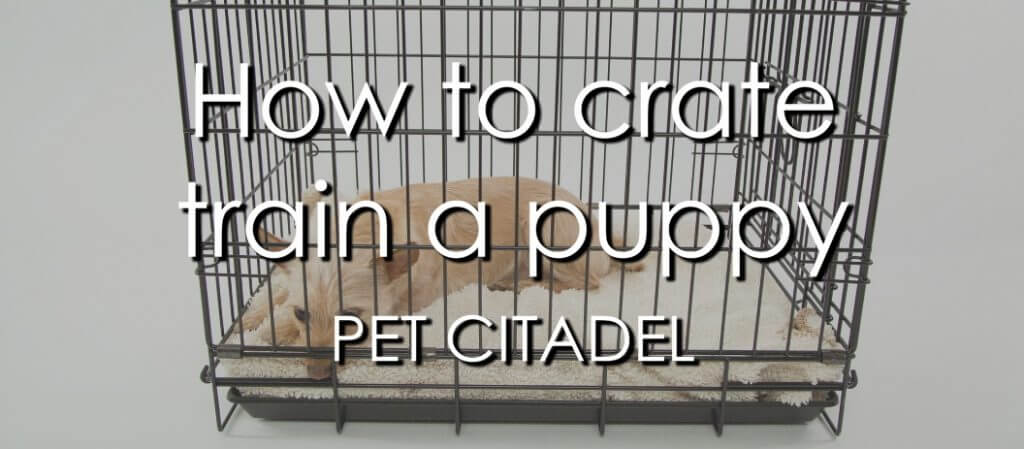
When it comes to crate training, people have different views and opinions on its effectiveness.
Some people consider it a cruel way of treating a puppy; they say that it’s a domestic animal and shouldn’t be treated like wild animals with dens such as lions or cheetahs. After all, dogs are already highly isolated and are one of the most preferred pets in society.
Some people very much enjoy coexisting with dogs and puppies in their homes. They may even go so far as to sleep next to them in their bedrooms. Some people like the idea of waking up and seeing their dog right beside them before getting ready for the day.
Well, with all these ideas and opinions, it’s important to note that crate training a puppy is actually a good idea in most cases. Just like humans, a dog at times needs its own free space to relax and be able to naturally enjoy its own peace of mind.
Moreover, crate training is also a good way of managing a puppy, especially when the owner is busy and not available. Dog owners aren’t able to babysit and supervise their dogs 24/7, and so when the dog gets used to a crate, it can go there to feel safe and calm without assistance.
8 Benefits Of Crate Training A Puppy
A dog is actually one of the most social animals on earth, and needs to be taken care of in such a way that they feel they are part of the family, or “pack” as they might perceive it.
This is why crate training is so beneficial. Consider a dog that is properly crate trained: if you direct the dog to go into its kennel (or crate), it will be happy to do so, and once inside, it will feel happy, calm, and safe.
There are numerous advantages to crate training, both for the dog and yourself as the owner. They are discussed below.
1. Big step in house training
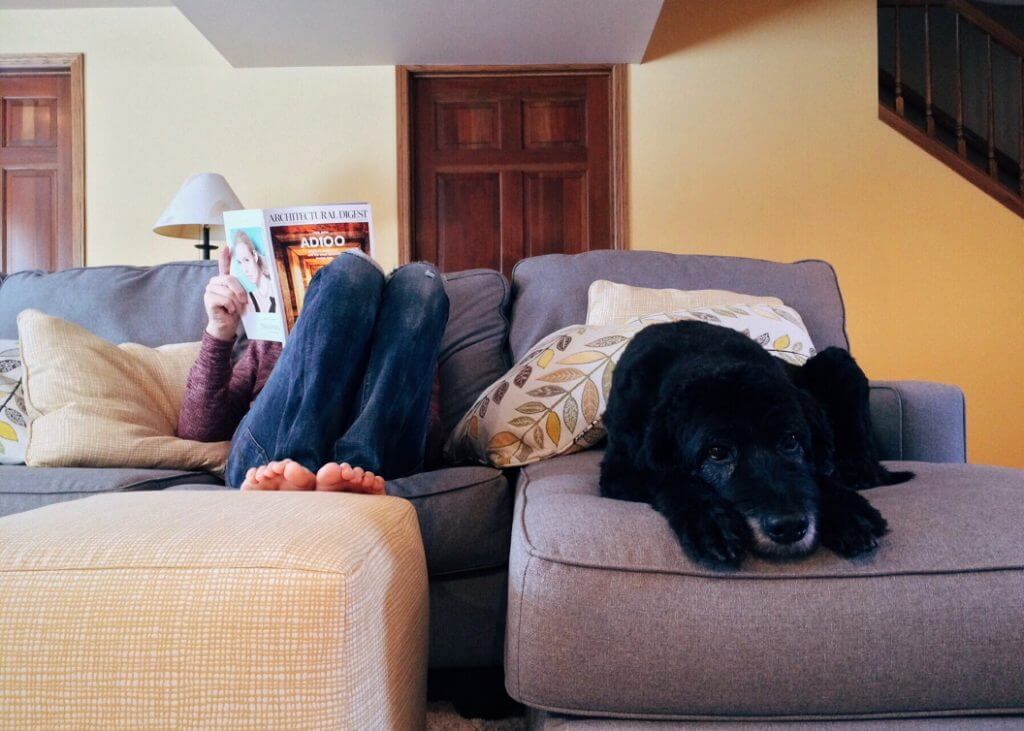
Crate training is essential in the house training process. It can be considered the fundamental basis for familiarizing a puppy to a house environment.
This is because, as stated earlier, a dog is a domestic animal and needs to live in a home, however big or small. Hence, crate training is one of the best ways to get a dog used to living inside a house.
2. Security in the home
Crate training assures you of the security of the dog. If you’re out running errands or out of the house for whatever reason, and the dog is alone, you generally won’t have to worry that the dog is uncomfortable, soiled, or is doing something that it shouldn’t be doing and developing bad habits.
Wherever you might be, knowing that your dog has access to a place where it feels comfortable and safe will give you great peace of mind and allow you to be more productive.
3. Containment
A crate provides the means for easy confinement of the dog when necessary. Of course, a crate is not a prison and shouldn’t be used as one, but there are times when you don’t want your dog to be loose.
Consider, for example, a dog that tends to be fearful or aggressive around visitors to the home or children. In such a scenario, it might be a good idea to lock it in its crate so as to prevent conflicts, biting, or excessive barking. This will also allow it to gradually get comfortable around people or animals that are causing issues.
4. Security on the go
If you travel often and take your dog with you, you can be assured of its security and comfort on the go.
A dog that is crate trained will be able to adapt to new environments much more easily by having access to its familiar crate.
5. Refuge from noise
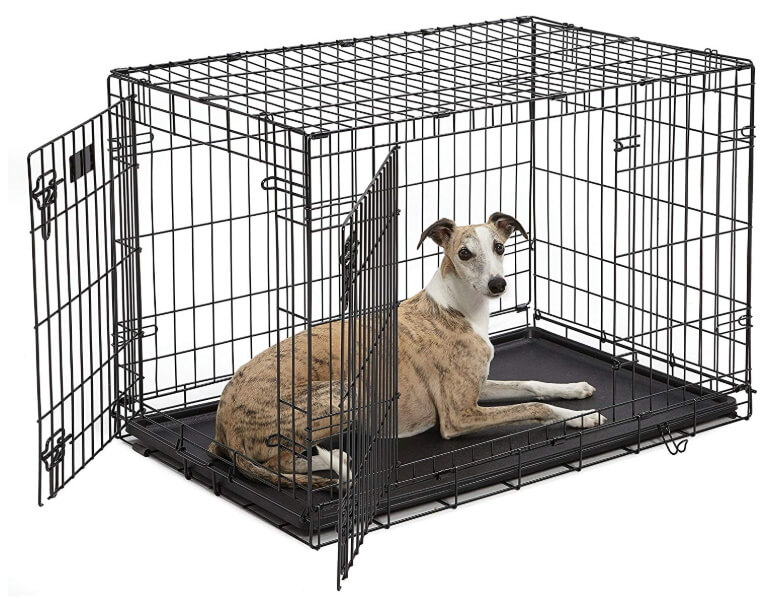
A crate provides a noise refuge for your dog. By this we mean that your dog can retreat to it and feel safe during high-stress or noisy occasions such as parties, gatherings, and other occasions that heighten its anxiety. The dog will be able to relax and preserve its health.
6. Injury prevention
Crate training is an effective way to ensure the safety of your dog from injury or poisoning (such as eating food that’s not good for them) while it’s home alone.
Also, if a dog is already injured and needs to rest, a crate will prevent them from being up and about and making the injury worse.
7. Protecting items in the home
Crate training will allow you to protect your furniture and other iems in the home from your dog while you’re out of the house. Some dogs have bad habits such as scratching, digging and biting that can damage objects in the home.
8. Post-surgery recovery
Crate training provides an opportunity for enhanced post-surgery care. A dog is more like to feel comfortable and safe after a surgical operation in its crate.
In many cases, a dog’s activities need to be heavily restricted after a surgery, and a crate will prevent it from doing the wrong things and re-injuring itself, potentially leading to serious complications.
Choosing The Best Crate For Your Puppy
Some people don’t like purchasing a crate for their puppy with the idea in their head that it’s supposed to be like a den.
Well, in fact, it’s okay to think of it like this; dogs are animals that should have personal space to eat, nap, or hide. Think of it like purchasing a small house for your dog.
Before making a decision on a crate, it’s essential to consider not just the height and width of the dog, but also the type, material, size, and safety features of the crate. We discuss these factors briefly below:
1. Type & Material
There are various types of dog crates available. Here are a few of the most common:
Plastic
Plastic crates are ideal for people who like traveling with their dog. This is because they’re typically very portable, easy to clean, and lightweight. They also have low visibility which can help manage a dog’s anxiety, and they’re harder to escape from.
The disadvantages associated with plastic crates are that it can be quite uncomfortable, especially for dogs that need visibility, and the plastic may overheat, especially during hot weather.
Wire
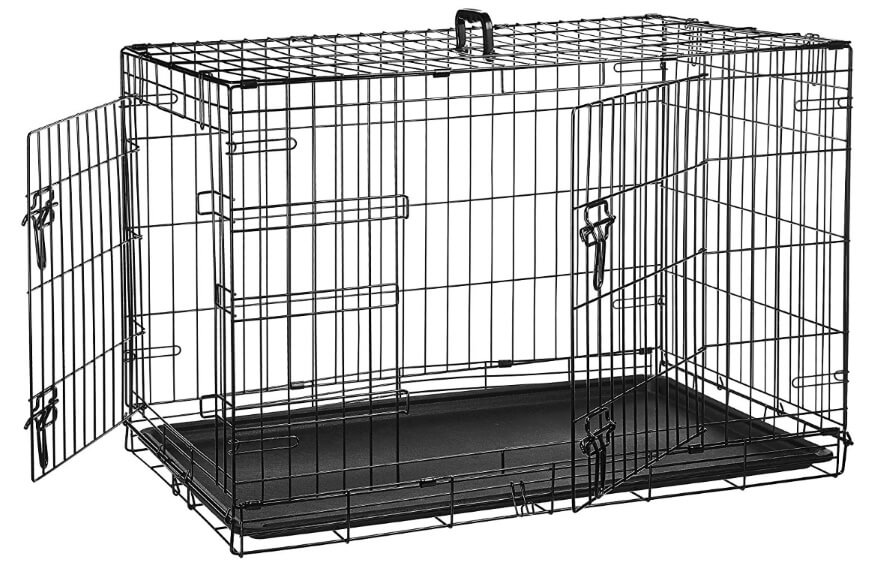
Wire crates are portable, easy to clean and highly ventilated, and thus are a good choice for dogs that like viewing the environment.
This crate allows a puppy to be able to grow effectively due to having a removable door, although a disadvantage is that a wire crate tends to be noisier than other types of crate.
Soft-sided
Soft-sided crates are portable, easy to store and lightweight.
Despite this, they suffer from some shortcomings: they’re not very durable, hard to clean, and usually small. Also, they can be easy to escape from, which can be good or bad depending on the situation.
Heavy-duty
Heavy-duty crates are well ventilated, strong and durable, in addition to usually being airline-approved for easy travel with your dog.
The main disadvantage is they’re usually expensive to acquire and maintain.
Furniture
Furniture dog crates are dog crates that can double as home furniture. The most common ones are end tables and sideboard cupboards. While stylish, they’re not portable, they’re difficult to clean, and the wood can be easily damaged.
For serious crate training, we would not recommend this type of crate.
Size
Size is an essential factor to consider in a dog crate. The goal is to select a size that is most ideal for your puppy, and eventually, adult dog.
More specifically, you should estimate what size your puppy will be when fully grown and get a crate that will accommodate that. Before they reach this size, we suggest using a divider panel to cut down the space a bit.
The crate should not be too big or small; it should to be roomy enough that the dog is able to freely stand or move inside.
Safety
A good dog crate should be able to keep your dog safe from dangers and hazards, usually brought about by either a dog’s destructiveness or curiosity.
Besides this, it also has to protect your house belongings from damage caused by your dog.
Ideal Place For A Dog Crate
A dog crate should be placed in an area that is comfortable, relatively quiet, and easily monitored by humans. Some of the important criteria to consider include:
1. Temperature control
The crate should be placed away from direct sunlight, vents, and fireplaces. Avoid drafty areas.
2. Low traffic
The crate should be placed in quieter areas that don’t get constant foot traffic.
Near a TV can be fine depending on the dog, but wherever you put it, make sure it’s out of the way of the normal paths that people take in the house.
3. Hazards
Keep the crate away from toxic household substances, power cords, power outlets, swinging doors, or other things that could be considered hazardous.
Crate Training A Puppy – Step By Step
Now let’s get into the training. What do you have to do? What is the process?
We’ll show you how to do it the right way, step by step.
1. Set up the crate.
Remember, we don’t want to force our pup into the crate, but rather, we want it to be its own decision.
If your puppy has never seen a crate and you try to force it to enter, it will likely become fearful, and you don’t want that. It’s all about being gradual.
So, the first and the most important thing you need to do is to make your dog believe that the crate is good, interesting, or safe. If your puppy loves a particular toy, keep it in the crate. Also, at times, keep a few of its favorite treats in and around the crate.

Put some comfortable bedding in the crate so that it looks homely and inviting. If you manage to make the crate look attractive to your puppy, half the battle is already won.
2. Start introducing your puppy to the crate.
This step may take a lot of time and require a lot of patience.
You’ve already placed toys or treats in and around the crate and bedding inside the crate. Since puppies are curious by nature, chances are good that within a few hours, if not minutes, it will move into the crate if not for anything else then to get the toy or treat or check out the bed.
But even if your dog is showing interest in the crate, do not give any attention to this. Don’t look disappointed if it doesn’t enter the crate, or excited if it does.
If your dog enters the crate, eats the treats and comes out, it’s a good sign. When it’s not around, drop in a few more treats to give it an incentive to enter again. If it moves its toys out, put them back in when it’s not noticing.
Do this for a few days before moving on to the next step of the training, and for a few days after you’ve moved on to the next step.
3. Allow your puppy to eat inside the crate.
Feed your puppy its meals inside the crate itself.
To begin with, place its food bowl just at the entrance of the crate. Your puppy probably won’t mind entering this much. Repeat this for a few meals and then push the bowl farther into the crate.
Once your puppy is entering midway into the crate to eat, start pushing the bowl to the back. Note that results will vary from dog to dog.
Over time, you will notice your dog moving into the crate as soon as it sees its food bowl in your hand.
4. Decide on a cue word.
Decide on a cue word for the crate and begin using it. Some good options are “crate”, “place”, and “kennel”. Now, whenever you see your pup entering the crate, use the cue word this way: “good, crate”.
Once your dog starts understanding the cue word, you can try moving it in on command by doing this: sit close to the crate, show a treat, and repeat the cue word. Wait for a few moments before repeating.
If your puppy doesn’t understand it, move your hand with the treat inside the crate while repeating the command. This is likely to work.
Just like it takes time when to teach your dog tricks, this can take some time to see results.
5. Help your dog learn to lie and sit down in the crate.
Once your dog has become accustomed to moving into the crate on command, the next thing you need to do is to teach it to lie down and sit inside.
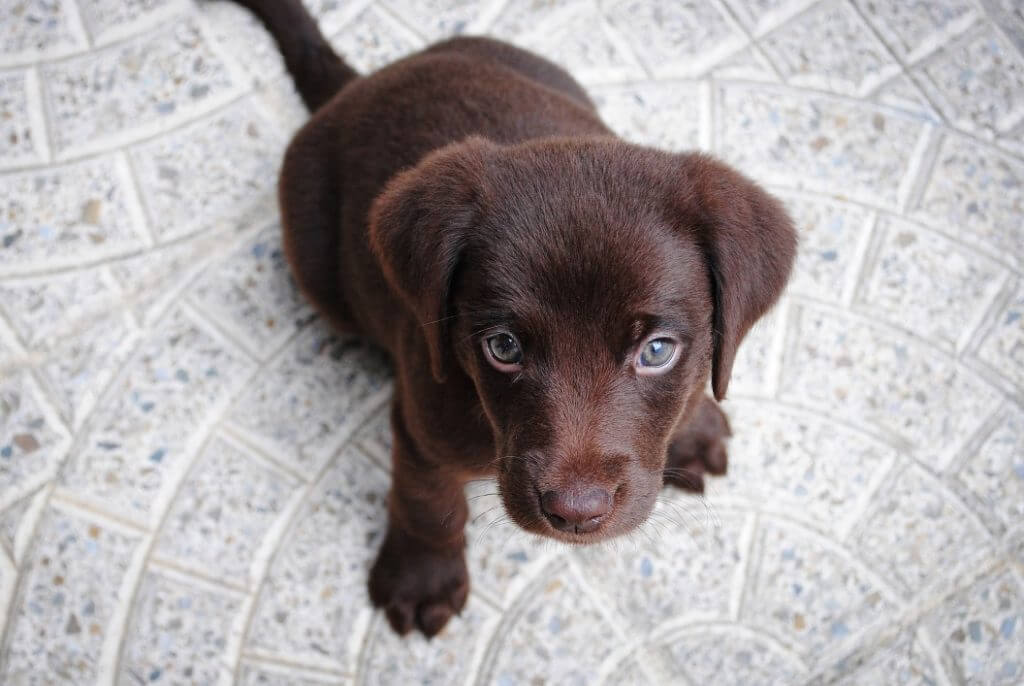
Note: Your dog should know how to lie and sit down on command before you begin with the crate training process.
The next thing you have to do is command it to enter the crate, then ask it to sit. Once it sits, give it a treat. Now, ask it to lie down, and again reward it if it obeys.
Repeat this a few times, take a break, and repeat it a few times more. They should develop the habit in a few days.
6. Close the crate gate.
Everything you have done so far was with the crate door open or removed completely. Now it’s time to get your puppy used to being inside with the door closed. You should be very careful, patient and gentle here.
Get your dog to enter the crate and sit, and then reward it. Next, get it to lie down, and again reward it. Now, close the door slowly, but don’t latch it yet.
Continue praising your dog for a while through the door while it’s closed for staying calm. After a bit of time, open the door and command it to come out.
Don’t close the door completely in one go. Keep it partially closed for several repetitions, and gradually close it more and more until you can close it fully, eventually locking it. This can take a while, but it’s important to prevent your dog from becoming fearful during this process.
7. Leave your puppy alone.
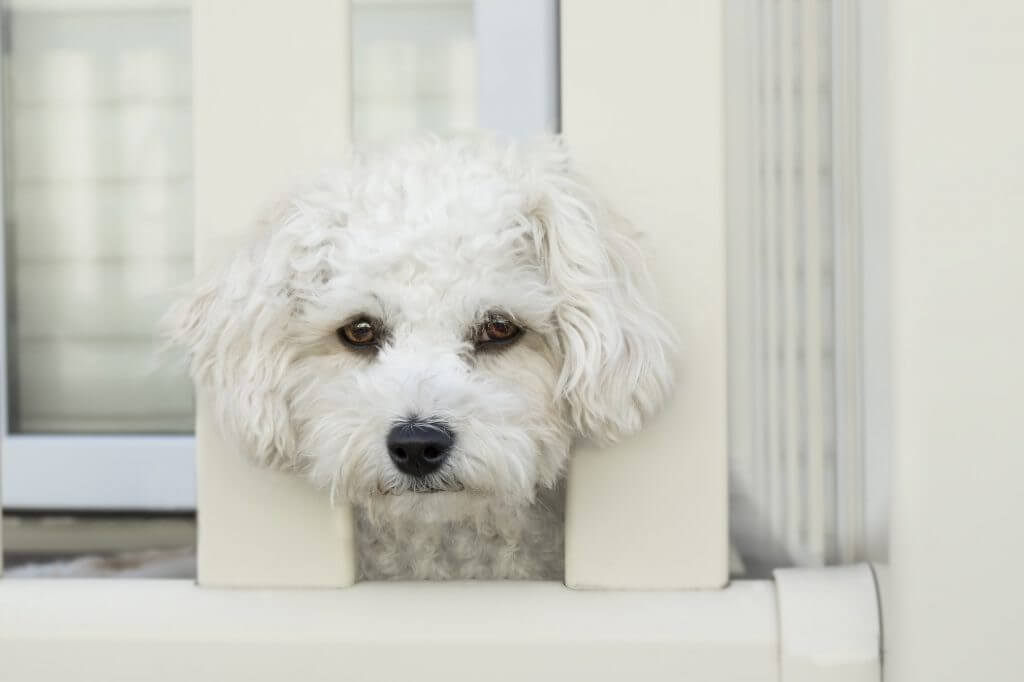
Once your dog is comfortable inside the locked crate, it’s time to leave them alone.
Command your puppy to move into the crate, ask it to sit, latch the door, reward and praise it, and take a few steps back while still facing your puppy.
Go back, praise it again and give it a reward.
Now, open the door and allow your puppy to come out.
Repeat this at least 8 to 10 times, and then take a break and practice again.
Over time, keep extending the distance that you move away from the crate, and also the time that you wait before you go back to your dog and open the crate.
Only when your dog gets comfortable should you move out of the room completely. Gradually keep increasing the time away, and always praise your dog for staying calm.
As for how long you should leave your puppy in the crate at any one time, use this chart (consecutive minutes, not total minutes in a day) as a guide:
| Age | Maximum Time |
| 9-10 weeks | 30-60 minutes |
| 11-14 weeks | 1-3 hours |
| 15-16 weeks | 3-4 hours |
| 17+ weeks | 4-6 hours |
Remember that this is often a very slow process. But eventual success is very much worth it.
8. Leave the house.
At this point, you want to get to the point where you can leave the house and have your dog wait for you patiently inside the crate.
Make sure the bed inside is comfortable and your dog has enough chew toys to keep it busy, lock it inside the crate, and go out.
Come back home after a few minutes, but stay calm and don’t praise your pet this time. Praising and excitement can make your dog feel like this is a big occasion, but you want to teach it that this is completely normal. Once it understands this, it will be easy both for you and your dog.
As with the above steps, you can gradually increase the amount of time you’re out of the house.
The Do’s and Don’ts of Crate Training

Making too many mistakes can render this training ineffective and a waste of time. Now that you understand the whole process, let’s go through some do’s and don’ts – what you should and shouldn’t do when crate training your puppy.
Do’s
- Do make the crate as attractive (and functional) as you can with a comfortable bed, toys that your pup loves, and its favorite treats.
- Do have one or more cue words for entering and exiting the crate, and use those cue words each time.
- Do ensure your pup has relieved itself before crate training sessions.
Don’ts
- Don’t lock your puppy inside the crate when you are home and when there’s no need for it to be in there.
- Don’t use an excessively large cage. It should just be spacious enough to allow it to stand, sit and turn around easily.
- Don’t use the crate as a prison or punishment tool for your dog. Moral arguments aside, this will make it difficult to get the dog calm and comfortable when you leave the house.
- Don’t use the crate for too long a period. A two-month puppy should stay in the crate for no more than 3 hours during the day and 1-2 hours at night. The calculation has to be made keeping the age of your pup in mind.
Conclusion
Crate training is important for a puppy for many reasons. It provides a safe space that it can go to whenever it wants, and it also allows you to keep it as well as the belongings in your home safe when you’re away and not able to supervise it.
If you want good, long-lasting results, you should be prepared to be patient and put in consistent effort. If you find that your puppy isn’t yet comfortable with the crate after a few days, give it some more time.
Of course, this isn’t the only way to crate train your puppy. And some strategies will work better than others, but sometimes, it’ll be very difficult to train it on your own. In this case, you may need to seek professional help.
But professional dog trainers can be extremely expensive – over $600 for 4 hours, or even more. Most people can’t afford this amount for just 4 hours of help.
There’s a solution. You can get instant access to a dog training program by a certified dog trainer with over a decade of experience working with clients.
This trainer has figured out that common puppy problems like not responding to training methods or commands fundamentally come down to learning how to calm it down so it can regain control of its emotions.
And so he’s put together a series of videos, including a special video diary called Project Moses, that will help your puppy develop the life skills needed to be well-trained, stay focused and listen to you, despite any distractions.
This dog training package is substantial, and it costs a tiny fraction of what you would pay for the services of a typical dog trainer or behaviorist.
You can alternatively read my review of the program.
Don’t give up, try to make the process fun, and sooner or later, you’ll be able to reap the benefits of a crate-trained dog.
Thanks for reading this guide. Do you need to crate train your puppy? What has been your experience with crate training? Feel free to share in the comment section below!

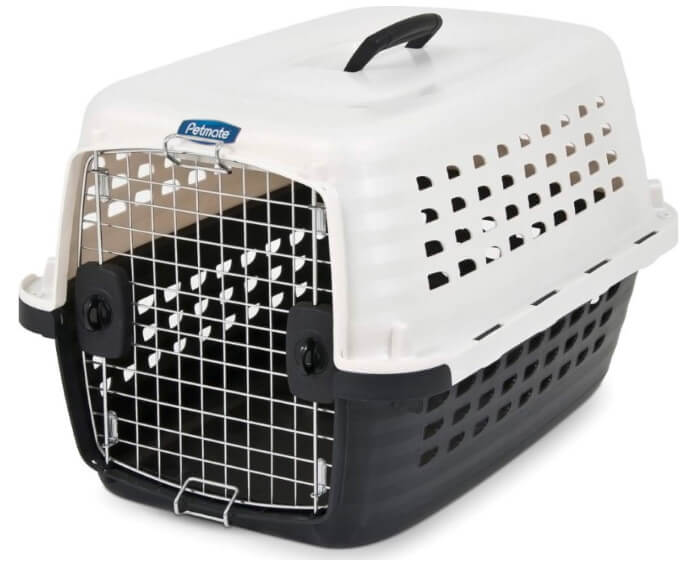
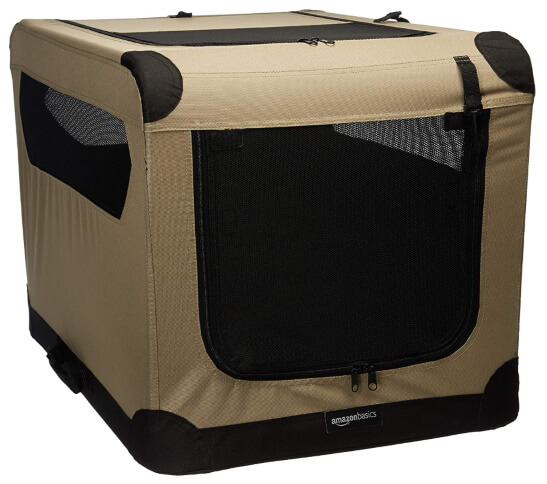
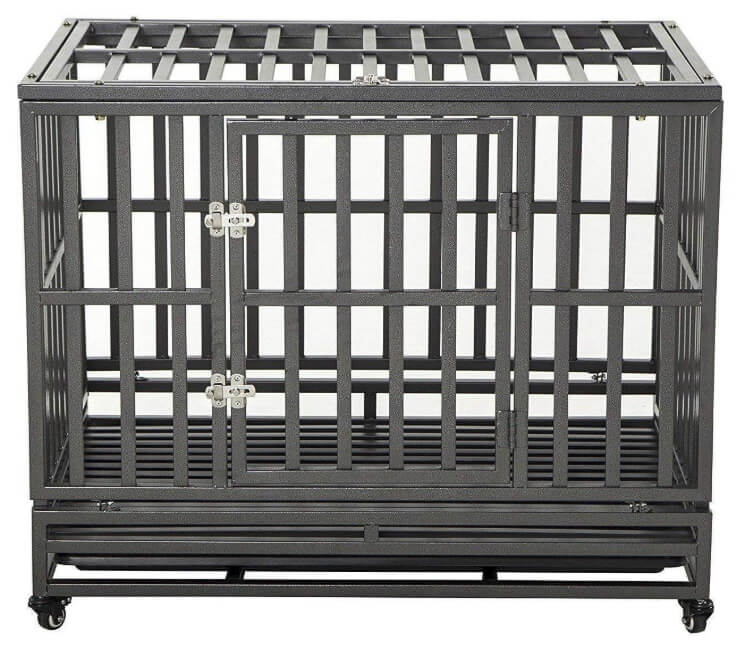

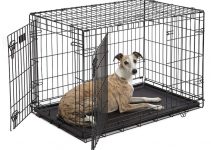


It was tough crate training my 10-week old Frenchie. I firmly believe that some dogs train more easily than others, even within the same breed. This makes sense: dogs are individual just like us. Anyway, I did most of the methods outlined in this article, but the process was quite slow, and for some reason, she seemed reluctant to go into the crate (or any crate for that matter). We were able to crate train her, but it took longer than we had hoped it would. Very good article!
Indeed, results will very, but unless a dog has serious problems, they will become trained with enough time and effort. If you filled me in a bit more on your Frenchie’s background, I might be able to offer more insight. Thanks for stopping by!